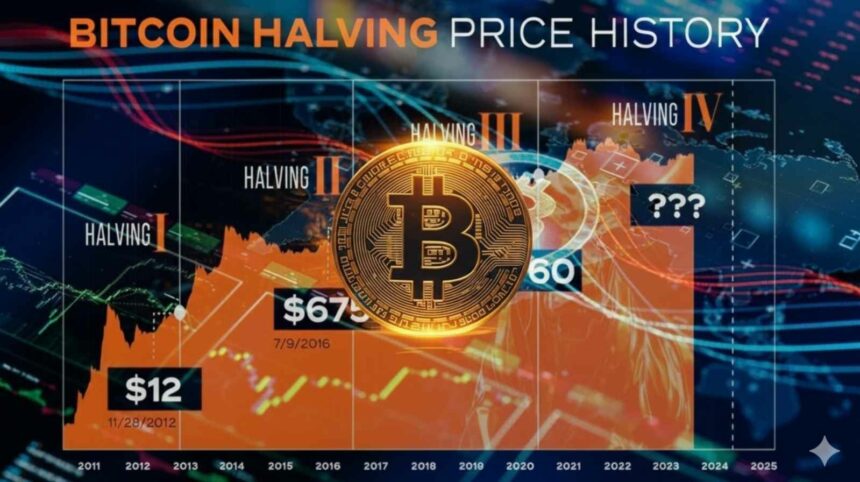In the world of cryptocurrencies, few events carry as much significance as a Bitcoin halving. Scheduled to occur roughly every four years, the halving is an essential mechanism coded into Bitcoin’s DNA. It ensures that the supply of Bitcoin decreases over time, making it scarcer and, in theory, more valuable.
In 2024, Bitcoin will undergo its fourth halving, reducing mining rewards from 6.25 BTC per block to 3.125 BTC. This event has investors, miners, and analysts around the world buzzing with anticipation. While some see it as a chance for another historic bull run, others view it as a test of Bitcoin’s resilience in a maturing financial landscape.
This guide will take you through everything you need to know about the 2024 halving: what it is, why it matters, its history, potential outcomes, risks, and strategies for investors.
What Is Bitcoin Halving?
Bitcoin halving is a pre-programmed event that reduces the reward given to miners for validating transactions and adding new blocks to the blockchain. Satoshi Nakamoto, Bitcoin’s mysterious creator, designed this mechanism to introduce scarcity and mimic the finite nature of resources like gold.
Every 210,000 blocks — roughly every four years — the block reward is cut in half. This halving process continues until all 21 million Bitcoins have been mined, which is expected around the year 2140.
Why does this matter? Because halving limits the number of new Bitcoins entering circulation, reducing inflation and making the asset scarcer over time.
The Purpose of Bitcoin Halving
The halving is not just a technical feature; it’s a cornerstone of Bitcoin’s economic model. Its primary purposes include:
-
Controlling inflation: Unlike fiat currencies that can be printed endlessly, Bitcoin has a hard cap. Halving events ensure fewer new coins enter the market over time.
-
Creating scarcity: Just as gold becomes harder to mine as reserves dwindle, Bitcoin becomes scarcer with each halving. Scarcity often drives value.
-
Encouraging long-term adoption: By reducing rewards, Bitcoin incentivizes holders and investors to view it as a long-term store of value rather than just a speculative asset.
A Look Back: Previous Halvings and Their Impact
Understanding the 2024 halving requires looking at history. Bitcoin has already experienced three halvings, and each one had a profound impact on its price, adoption, and market behavior.
2012 Halving (50 BTC → 25 BTC)
The first halving took place in November 2012. At that time, Bitcoin was still largely unknown outside small tech communities. Before the event, BTC was trading around $12. By late 2013, Bitcoin had surged past $1,000 for the first time. The halving effectively marked the start of Bitcoin’s first major bull cycle.
2016 Halving (25 BTC → 12.5 BTC)
By the time of the second halving in July 2016, Bitcoin had gained more recognition. The price before the halving was around $650. Over the next 18 months, Bitcoin skyrocketed to nearly $20,000 in December 2017. This period solidified Bitcoin as a mainstream financial asset, attracting global attention.
2020 Halving (12.5 BTC → 6.25 BTC)
The third halving in May 2020 occurred amid the global COVID-19 pandemic. At the time of halving, Bitcoin was valued at about $8,600. Over the next year and a half, it reached an all-time high of nearly $69,000 in November 2021. Institutional adoption accelerated during this cycle, with companies like Tesla and MicroStrategy investing billions.
The Pattern
While past performance doesn’t guarantee future results, the trend is clear: each halving has historically preceded a massive bull run. The combination of reduced supply and growing demand created explosive price growth.
Bitcoin Halving 2024: The Key Details
The upcoming halving is projected to occur in April 2024, at block height 840,000. At that moment, mining rewards will fall from 6.25 BTC to 3.125 BTC.
This halving will further tighten Bitcoin’s supply. With nearly 19.6 million BTC already in circulation, fewer than 1.4 million coins remain to be mined over the next century. Each halving makes Bitcoin more scarce and closer to its ultimate limit of 21 million.
How Halving Impacts Bitcoin Miners

Miners play a vital role in the Bitcoin network, but halving events hit them the hardest. Their revenue is directly tied to block rewards, so when the reward halves, profitability decreases unless Bitcoin’s price rises to compensate.
The Challenge
For small or inefficient miners, the 2024 halving could make operations unsustainable. Many may shut down, leading to temporary decreases in network hash rate.
The Opportunity
However, miners with access to cheap energy and efficient hardware may gain a larger share of the network. Over time, as weaker miners exit, the mining ecosystem becomes stronger and more competitive.
Historically, miner capitulation after halvings has been short-lived. As Bitcoin’s price rises in the months or years following a halving, mining tends to become profitable again.
Investor Perspective: Why Halving Matters
For investors, the 2024 halving represents both an opportunity and a risk.
The Opportunity
Scarcity has historically driven Bitcoin’s price higher after each halving. Long-term investors believe the same pattern will repeat in 2024, potentially setting Bitcoin on a path toward six-figure valuations.
The Risk
However, markets are more mature now than they were in 2012 or 2016. Institutional players, regulatory scrutiny, and global economic conditions could dampen the impact. It’s also possible that much of the halving’s effect is already “priced in” by investors anticipating it.
Pros and Cons of Investing Around Halving
While bullet points are tempting here, let’s explore both sides in depth.
Pros: Halving reduces new supply, which, if demand remains steady or increases, creates upward pressure on price. For long-term investors, this scarcity model aligns with the thesis that Bitcoin is “digital gold.” Additionally, halvings generate media attention, often sparking new waves of adoption.
Cons: The flip side is volatility. Prices can swing wildly before and after a halving, and short-term traders may suffer losses. There’s also the risk that Bitcoin’s next cycle won’t mirror past ones, especially if global economic conditions shift or regulations tighten.
Will the 2024 Halving Trigger Another Bull Run?
This is the million-dollar question. Many analysts believe it will. Past halvings have led to exponential growth, and Bitcoin’s fundamentals remain strong. Some forecasts predict Bitcoin could cross $150,000 to $200,000 within two years of the halving.
Yet, caution is warranted. External factors such as interest rates, global recessions, or harsh regulations could dampen momentum. Investors should prepare for both scenarios: a historic bull run or a more subdued, gradual increase.
Strategies for Investors in 2024
To navigate the halving, investors should adopt balanced strategies:
- Long-term holding (HODL): Buy and hold Bitcoin, ignoring short-term volatility.
- Dollar-cost averaging (DCA): Invest a fixed amount at regular intervals, reducing exposure to price swings.
- Portfolio diversification: Don’t put all your capital into Bitcoin. Balance with other cryptocurrencies or traditional assets.
- Secure storage: Use reliable wallets (hardware or software) to safeguard holdings, especially as values rise post-halving.
Beyond Halving: Other Factors to Consider
Halving is crucial, but it’s not the only factor influencing Bitcoin’s price. Investors should also watch:
- Regulatory changes: Global governments are tightening crypto rules.
- Institutional adoption: ETFs, hedge funds, and corporate treasuries could fuel demand.
- Technological upgrades: Developments like the Lightning Network improve scalability and usability.
- Macroeconomic trends: Inflation, interest rates, and global financial stability all impact investor appetite for Bitcoin.
Conclusion
Bitcoin Halving 2024 is more than a technical event; it’s a milestone in the evolution of digital money. By cutting rewards in half, it reinforces Bitcoin’s scarcity and strengthens its case as a store of value.
For investors, the halving offers both opportunities and risks. While history suggests prices could rise dramatically, the crypto landscape is more complex than ever. The smartest approach is cautious optimism — invest strategically, manage risks, and remember that Bitcoin is a long-term game.
Whether you’re a seasoned investor or just starting your crypto journey, the 2024 halving is a moment worth watching. It could shape the future of Bitcoin for years to come.
Bitcoin Halving 2024 FAQs
Q1: How often does Bitcoin halving occur?
Every 210,000 blocks, or roughly every four years.
Q2: Does halving guarantee a price increase?
No. While past halvings led to bull runs, future performance depends on demand, regulation, and global economics.
Q3: How many halvings are left?
There will be 32 in total, with the last expected around 2140 when the 21 millionth Bitcoin is mined.
Q4: Will miners still support the network when rewards run out?
Yes. By then, transaction fees are expected to sustain miners.
